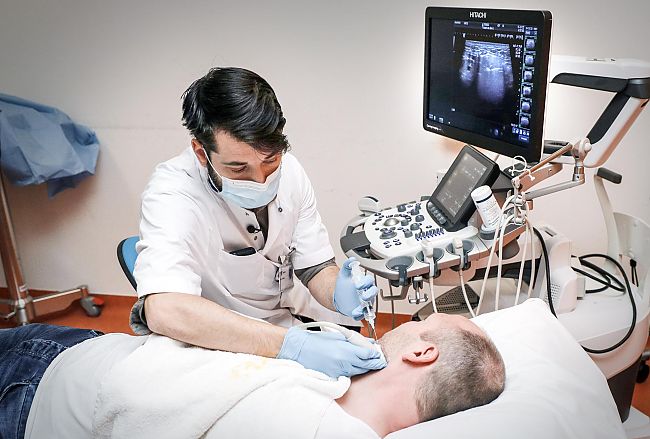On Thursday December 15, Casper van den Noort (43 years old) was the first of its kind in the Netherlands and may have been the first to obtain his own cells from cultured miniature salivary glands (organelles) after many years of research. The stem cell transplant should ensure that van den Noort will no longer suffer from dry mouth as a result of his treatment of his tongue tumor.
Van den Noort spoke of a private moment. “The injections were a little sensitive. I am of course very curious to see what happens next, and whether this will have the intended effect. It would be really nice if that salivary gland could start working again.”
Low quality of life
In the Netherlands there are around 2,500 new patients each year with a tumor in the head and neck region. Many of these patients have a good chance of recovery from radiation. A serious complication is that in 40 percent of patients, the salivary glands no longer function properly after treatment. As a result, they constantly suffer from dry mouth. Chewing and swallowing is difficult, their sense of taste is reduced, speech is very difficult, and the teeth are damaged. As a result, these patients often experience a significantly reduced quality of life.
A tumor on the tongue was found earlier this year in Van den Noort. During his operation at UMCG, part of his salivary glands were removed. “We’ve grown stem cells from this in the lab,” says Rob Kobis, MD, professor of radiation therapy at UMCG. We can multiply these forms of salivary gland organelles. After the irradiation, which the patient has now received at the proton therapy center, we bring back the cells from these organelles.”
final steps in the investigation
To solve this problem, Rob Cobbs’ research team has been researching salivary gland stem cell transplantation for years. About four years ago, he and his colleagues began the final steps to make the method safe and suitable for clinical use. After Casper van den Noort, a small number of patients will be treated in this way at the beginning of 2023. This is done within the framework of a clinical trial, in which a limited and selected group of patients can participate.
Determine if it will happen
“We hope that later next year we will be able to determine if the treatment is appropriate for patients,” Cobbs says. This study should serve as a “proof of principle” that such treatment is possible and safe. If we find a positive effect, we will treat patients with other tumor sites in a follow-up study who are also at risk of developing xerostomia after radiotherapy. If successful, the so-called organoid technology could also be applied to other tissues.”
Rob Coppes and his research group’s research has been made possible in recent years by KWF and ZonMW through various grants.
Pictured: UMCG radiologist Jeroen Pfister inserts organelles into patient Casper van de Noort.
Photo: Henk Veenstra

“Total coffee specialist. Hardcore reader. Incurable music scholar. Web guru. Freelance troublemaker. Problem solver. Travel trailblazer.”







More Stories
GALA lacks a chapter on e-health
Weird beer can taste really good.
Planets contain much more water than previously thought